Overview
This workshop was developed through collaboration between Donna Ellis, director of the Centre for Teaching Excellence, and Gordon Stubley, associate dean, engineering teaching. Donna and Gordon were also the facilitators for this session.
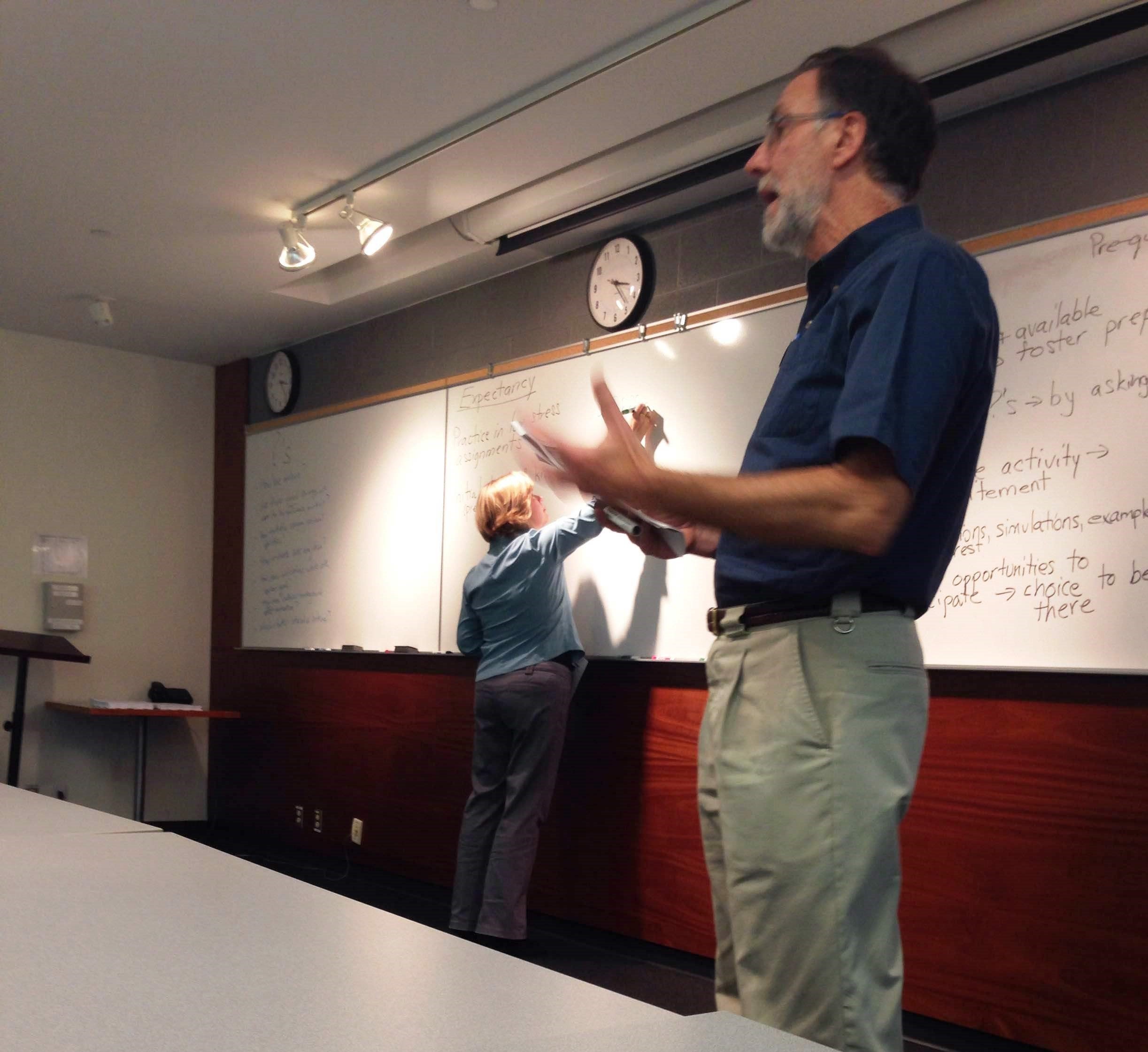
Donna Ellis and Gordon Stubley
The session began with workshop participants sharing their student motivation questions, which were noted on the board.
- How do students lose motivation?
- Are there small things we can do to influence motivation?
- How can we motivate students of varying abilities?
- How can we motivate over a longer term?
- How does motivation work in the face of sometimes conflicting goals?
- How does cultural background affect motivation?
- Which is better – internal or external motivation?
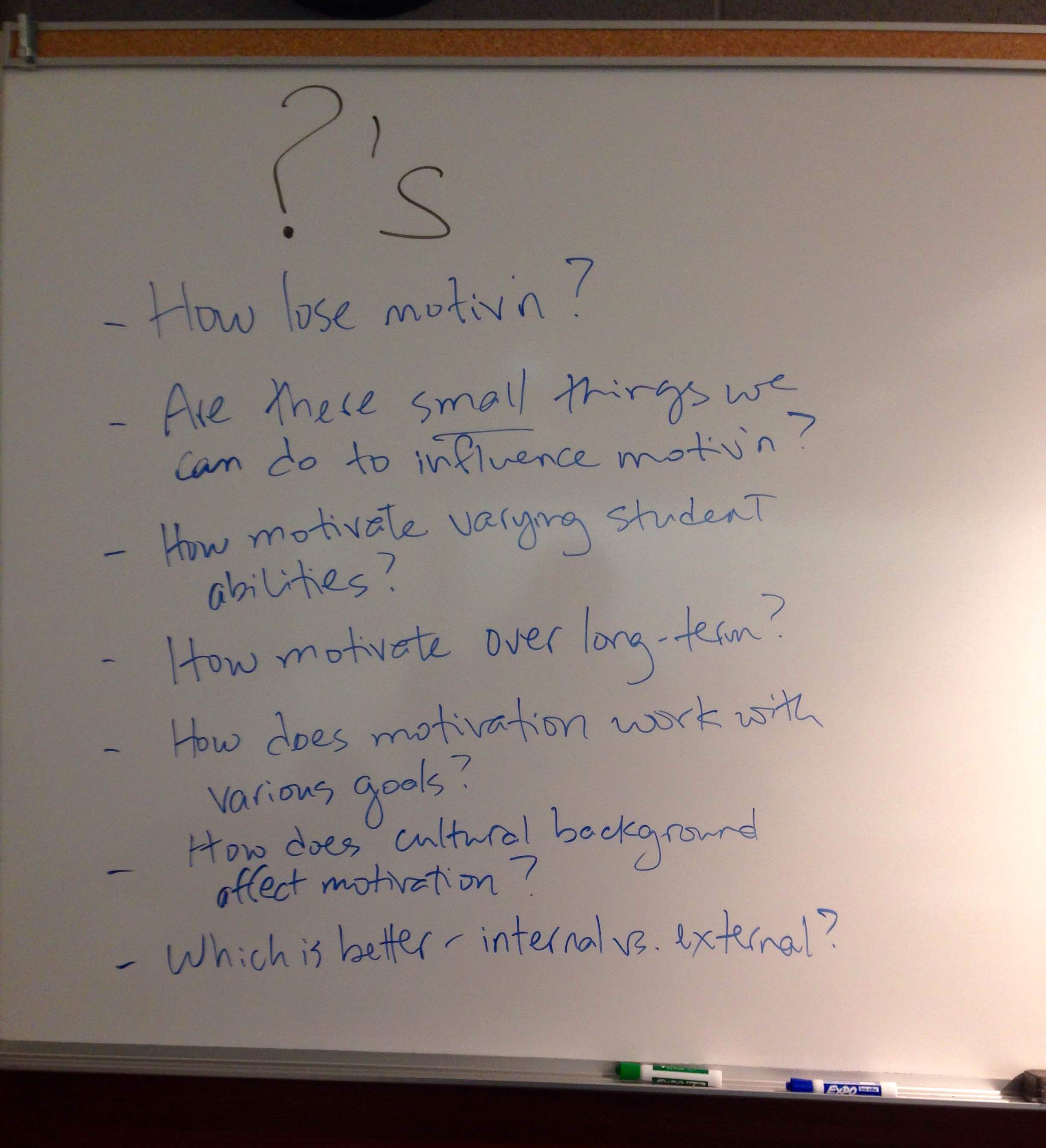
Participants' questions about student motivation
With these questions as a starting point, workshop participants took a few minutes to reflect on the observed motivation levels of students in their own classrooms and then shared their experiences in small groups. Each group then shared approaches they had implemented in their own classrooms while the facilitators noted them in two categories on the board.
In the "V" category:
- Reward student engagement by having interesting additional resources available and providing extra opportunities to participate for those students looking for deeper engagement
- Encourage students to ask questions by demonstrating openness to questions
- Stimulate student interest by bringing in real-life and relevant activities and demonstrations
In the "E" category:
- Provide students with opportunities to complete low-stress activities
- Help students to accurately gauge their own competence in the topic by using pre-quizzes
An amalgamated model of student motivation was presented and the E and V were respectively identified as Expectancy and Value.
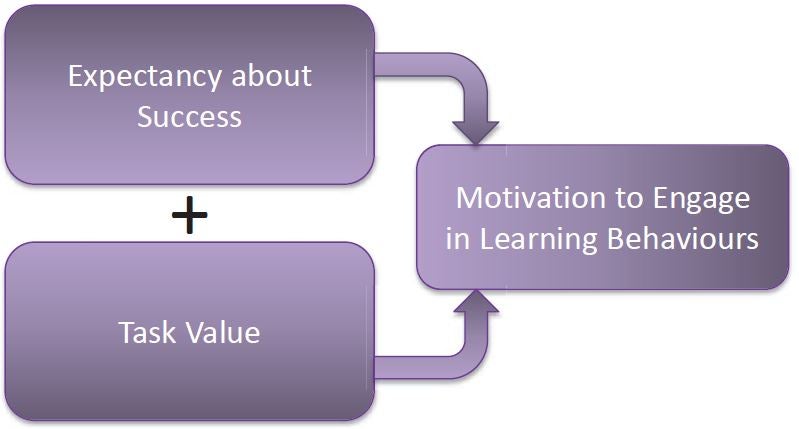
Amalgamated model of student motivation, adapted from Svinicki (2004)
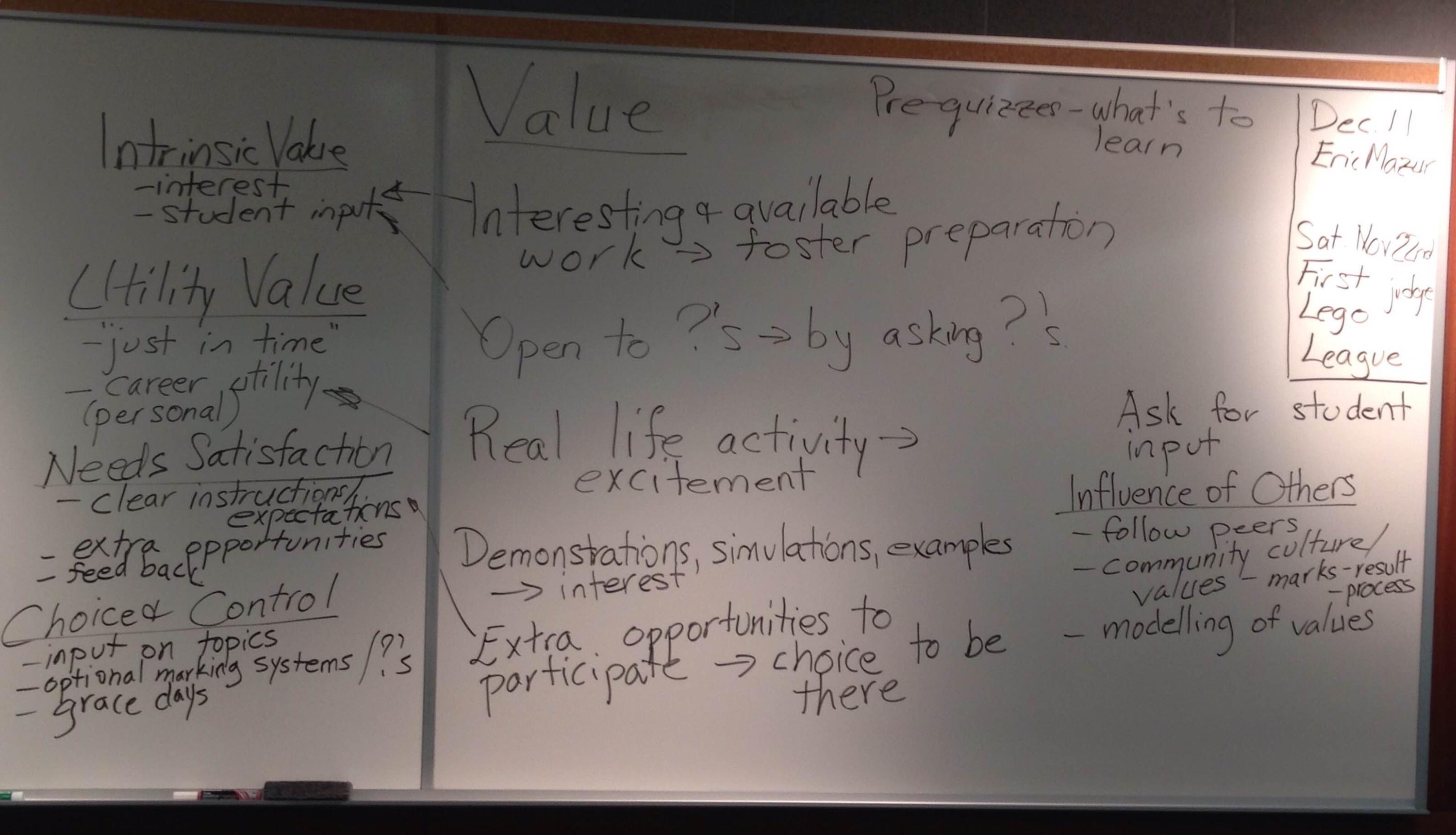
Connections between approaches and value elements
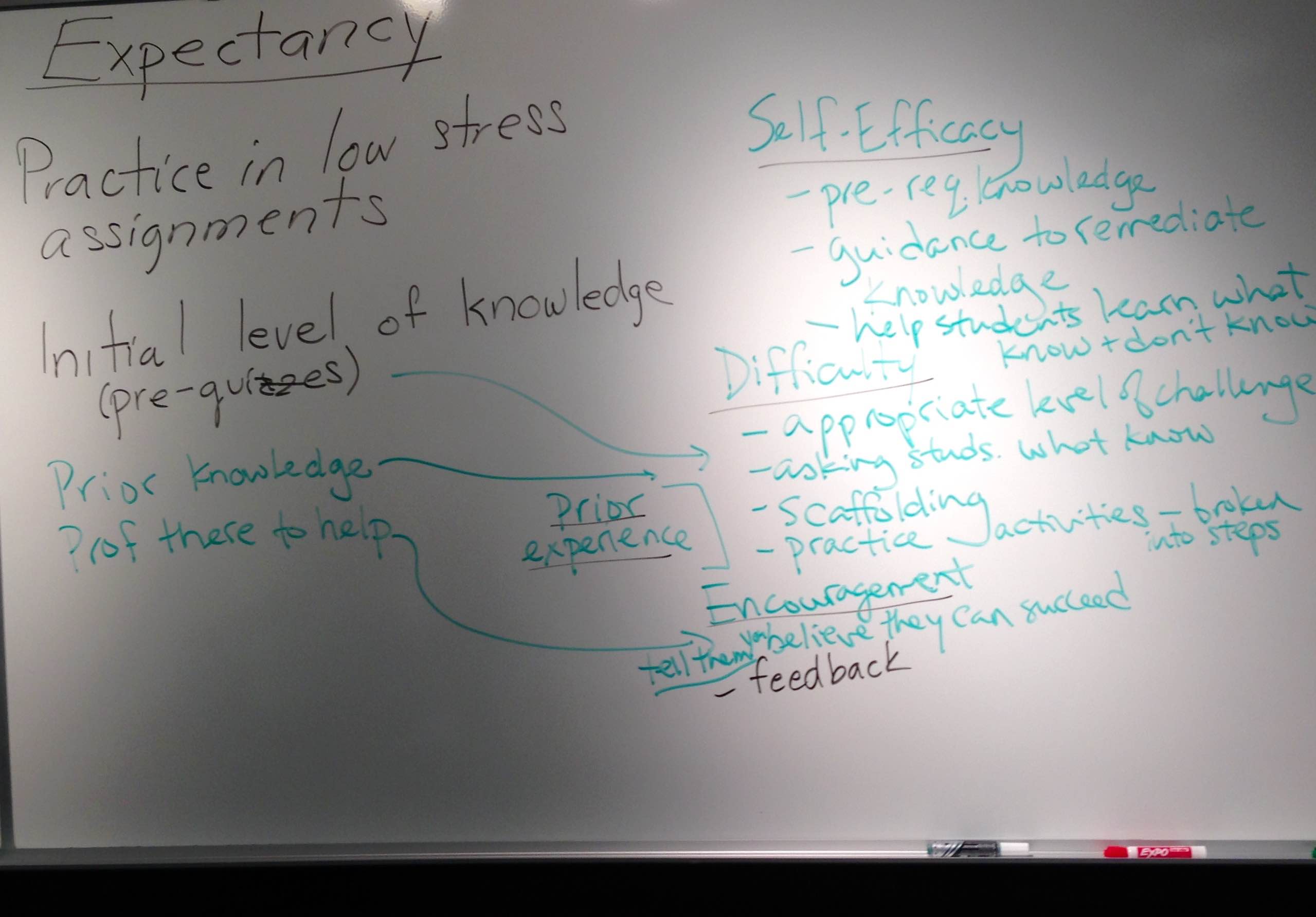
Connections between approaches and expectancy elements
Workshop participants noted instructional strategies in tables (below) that explicitly linked classroom activities with expectancy and value elements and were then asked to reflect on their own classrooms, both how they might apply elements from the model and the changes they might need to make to facilitate this application.
Expectancy determined by:
| Element | Description | Instructional strategies |
|---|---|---|
| Self-efficacy | Capability to succeed | |
| Difficulty | Appropriate level of challenge | |
| Prior experience | Build on past success and connect past work | |
| Encouragement | Positive talk and modelling | |
| Beliefs related to learning | General self-confidence as learners, |
Task value determined by:
| Element | Design | Instructional strategies |
|---|---|---|
| Intrinsic value | Interesting material and tasks | |
| Utility value | Short and long term use | |
| Need satisfaction | Need to succeed/avoid falure | |
| Choice of control | Independent decisions | |
| Influence/opinions of others | Do what others value |
Exemplary Attributes Illustrated in Workshop
As the participants reflect upon the workshop experience, the facilitators hope that they will recognize the strategies that were implemented to promote active learning for a diverse group of participants ranging from a first-year engineering student to faculty members with over 25 years of teaching experience. These strategies include prompting participants to access their knowledge of the topic through reflection on their own experiences, small group work to allow participants to share and refine their ideas, and providing time for participants to develop a clear takeaway by identifying an activity or strategy they could apply in their classrooms.
The facilitators also hope that participants can reflect upon the workshop experience and notice attributes of the workshop design and operation which helped participants engage in and remain motivated in the learning activities. Examples include:
- Running a "quescussion" to generate a list of participants' questions and areas of uncertainty in developing and maintaining student motivation (V)
- Drawing out and using participants' own teaching experiences to build knowledge (V)
- Providing clear instructions about what was going to take place (E)
- Guiding activities in a step-by-step manner (E)
- Connecting with participants' prior knowledge (E)
- Striving to help participants make progress and being open and responsive to questions (V)
In summary, the facilitators strove to model the actions of instructors successfully motivating their students to engage in learning activity (E) and they hope that participants left with a sense of accomplishment and appreciation for how they can encourage student motivation in their courses (V).
Resources
Student motivation for learning - October 2014 blog post (PDF)
Svinicki, M. D. (2004). Learning and Motivation in the Postsecondary Classroom. Bolton, Mass: Anker. Get It!@Waterloo
Original workshop handout: Student motivation for learning (PDF)
Extended workshop handout (PDF) - completed Expectancy and Value tables plus expanded model of student motivation